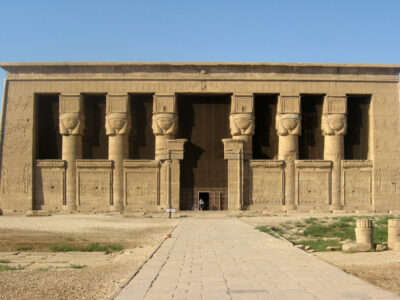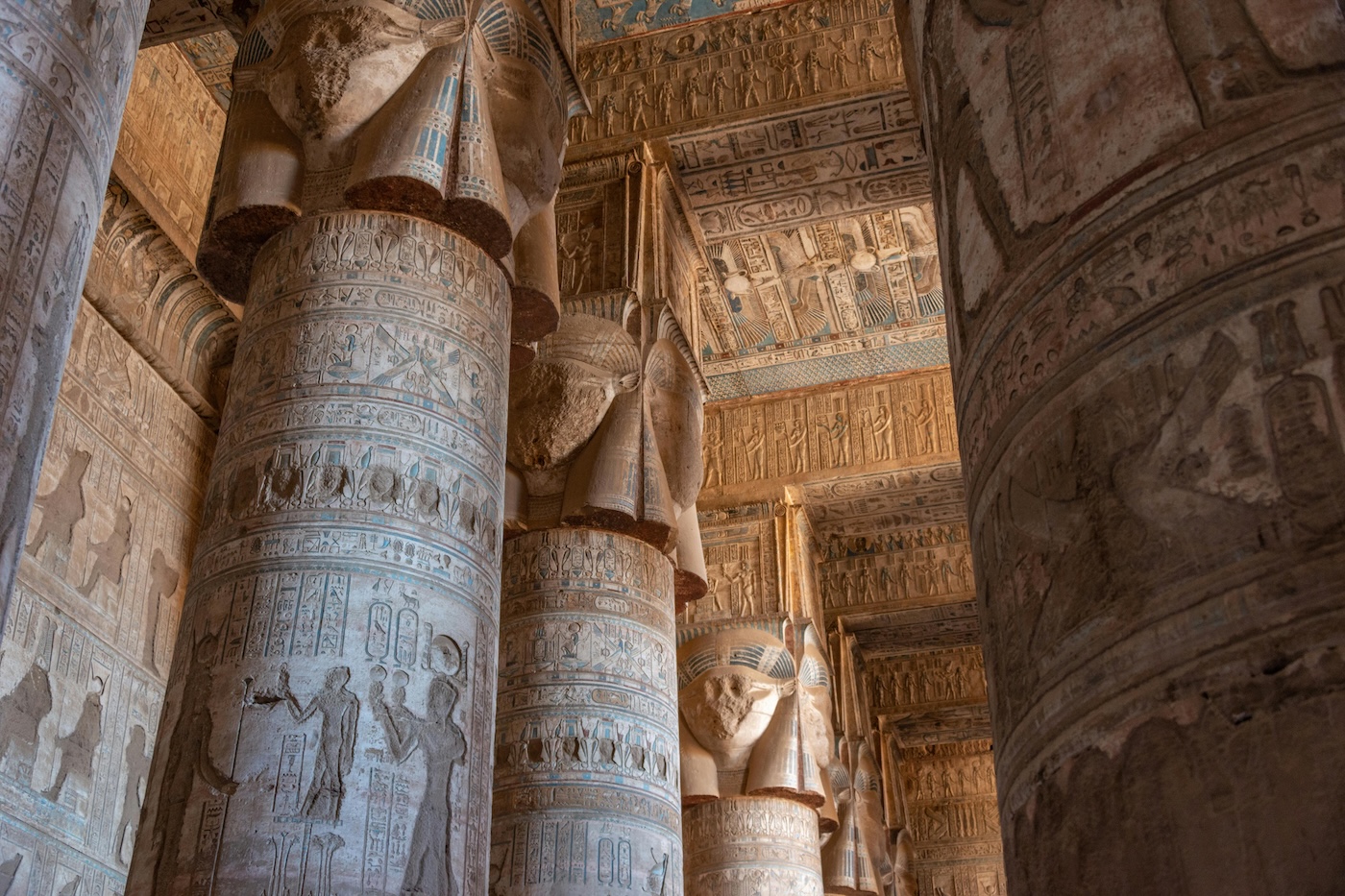Unveiling the Mystique of Dendera: Exploring the Ancient Marvels of Dendera Temple
Introduction
 Nestled on the West Bank of the Nile River, Dendera Temple Complex, also known as the Temple of Hathor, stands as a remarkable testament to the grandeur and spiritual significance of ancient Egyptian architecture. Dedicated to the goddess Hathor, the temple is a captivating fusion of art, religious symbolism, and astronomical precision. In this article, we embark on a journey through time to unveil the mysteries and marvels of Dendera Temple, exploring its historical context, architectural splendor, religious significance, and the enduring allure that draws travelers and scholars alike to this sacred site.
Nestled on the West Bank of the Nile River, Dendera Temple Complex, also known as the Temple of Hathor, stands as a remarkable testament to the grandeur and spiritual significance of ancient Egyptian architecture. Dedicated to the goddess Hathor, the temple is a captivating fusion of art, religious symbolism, and astronomical precision. In this article, we embark on a journey through time to unveil the mysteries and marvels of Dendera Temple, exploring its historical context, architectural splendor, religious significance, and the enduring allure that draws travelers and scholars alike to this sacred site.
Historical Context of Dendera Temple
The roots of Dendera Temple date back to the Early Dynastic Period, but its most significant expansions occurred during the Ptolemaic and Roman eras. Its construction continued over several centuries, resulting in a unique blend of architectural styles, spanning the vast timeline of ancient Egyptian civilization.
The Cult of Hathor: Goddess of Love and Joy
Hathor, the central deity of Dendera Temple, was venerated as the goddess of love, joy, motherhood, and fertility. She was also associated with music, dance, and the arts, making her a beloved and widely worshiped goddess throughout Egypt.
Temple Additions by Ptolemaic and Roman Rulers
During the Ptolemaic and Roman periods, the temple underwent significant expansions and renovations by various rulers, including Ptolemy XII, Augustus, and Tiberius. Each ruler sought to leave their mark on the temple, adding to its magnificence and significance.
Architectural Splendor of Dendera Temple
The architecture of Dendera Temple is a captivating blend of traditional Egyptian motifs, Greco-Roman elements, and intricate astronomical alignments. Each section of the temple complex exudes a unique charm and spiritual ambiance.
The Hathor Temple: The Central Shrine
The main temple, dedicated to Hathor, features an impressive façade adorned with elaborate carvings and reliefs. Hathor’s symbols, such as the cow horns and the solar disk, are prominently depicted, emphasizing her multifaceted attributes.
The Sacred Lake: Reflection of the Cosmos
The temple complex includes a sacred lake, symbolizing the primordial waters of creation and reflecting the skies above. The lake served a ritualistic purpose and played a crucial role in religious ceremonies dedicated to Hathor.
The Zodiac Ceiling: Astronomical Marvel
 One of the most intriguing features of Dendera Temple is the famous Zodiac Ceiling, a stunning astronomical representation of the night sky. The ceiling, though partially damaged, showcases zodiac signs and celestial constellations with impressive accuracy, revealing the ancient Egyptians’ knowledge of astronomy.
One of the most intriguing features of Dendera Temple is the famous Zodiac Ceiling, a stunning astronomical representation of the night sky. The ceiling, though partially damaged, showcases zodiac signs and celestial constellations with impressive accuracy, revealing the ancient Egyptians’ knowledge of astronomy.
Religious Significance of Dendera Temple Dendera Temple was a vibrant center of religious worship and pilgrimage, attracting devotees from all walks of life who sought the blessings and favor of the goddess Hathor.
The Cult of Hathor: Music, Dance, and Festivals
The worship of Hathor involved vibrant musical performances, dance, and jubilant festivals, celebrating the goddess’s joyful and nurturing aspects. Pilgrims from all over Egypt flocked to Dendera to participate in these festivities and seek Hathor’s divine blessings.
Rituals and Offerings
At Dendera Temple, priests performed various rituals and offerings to honor Hathor and ensure the well-being of Egypt and its people. Offerings of food, incense, and sacred libations were presented to the goddess, reinforcing the sacred bond between the divine and mortal realms.
Enduring Allure and Modern Significance The allure of Dendera Temple extends beyond its ancient origins, captivating modern-day travelers, historians, and archaeologists with its timeless charm and enigmatic symbolism.
Archaeological Discoveries and Preservation
Ongoing archaeological excavations continue to reveal new insights into the temple’s history and significance. The preservation efforts by Egyptian authorities ensure that future generations can experience the wonder of Dendera Temple and gain a deeper understanding of ancient Egyptian culture and spirituality.
Spiritual Pilgrimage for Modern-day Travelers
Today, Dendera Temple remains a destination for spiritual seekers, history enthusiasts, and travelers eager to connect with Egypt’s rich cultural heritage. Its mystical ambiance and ornate reliefs offer a profound sense of spiritual connection and wonder, making it a must-visit site for those exploring the wonders of ancient Egypt.
Conclusion
Dendera Temple, dedicated to the goddess Hathor, is a timeless masterpiece that captures the essence of ancient Egyptian spirituality, artistry, and astronomical wisdom. As we traverse its grand halls, gaze at its celestial Zodiac Ceiling, and immerse ourselves in its religious significance, we are transported back in time, bearing witness to the profound devotion and artistic brilliance of ancient Egyptian civilization.
NileTravel Machine invites you to embark on this captivating journey to Dendera Temple, where history and spirituality intertwine, inviting us to unravel the enigmas of Egypt’s past and embrace the enduring allure of one of humanity’s most fascinating ancient wonders.


